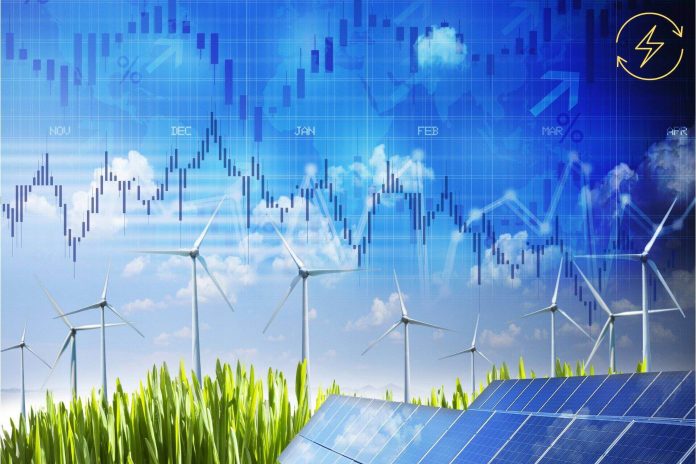The overview of energy trends in Croatia in the last five years which RESC analyzed for the period from 2018 to 2020 shows a continual, although slow development of RES projects in Croatia. Due to high summer temperatures and the development of tourism, the last few years saw an increase in the consumption of electric power, mostly due to the use of air conditioners, which we had to import during the summer months. Although we are a country with an exceptionally high number of sunny hours, unfortunately, we do not have a large number of solar plants which could produce electric energy and thereby substitute the imported ones. At the beginning of 2023, Croatia had 224 MW of installed solar plants and in the first two months, their number grew in comparison with the same period last year by 1.162. That is a large breakthrough for Croatia although, in comparison with Germany which in only the first two months of 2023 connected to the grid as much as 1.62 GW of new solar plants, it seems like an incomparably smaller success. Nevertheless, it seems that the energy crisis in 2022 promoted the increased use of solar energy.
Energy Trends in Croatia 2018-2022
We will begin the analysis with an overview of the monthly consumption of electric power in the period from 2018 to 2022 as shown in the picture below.
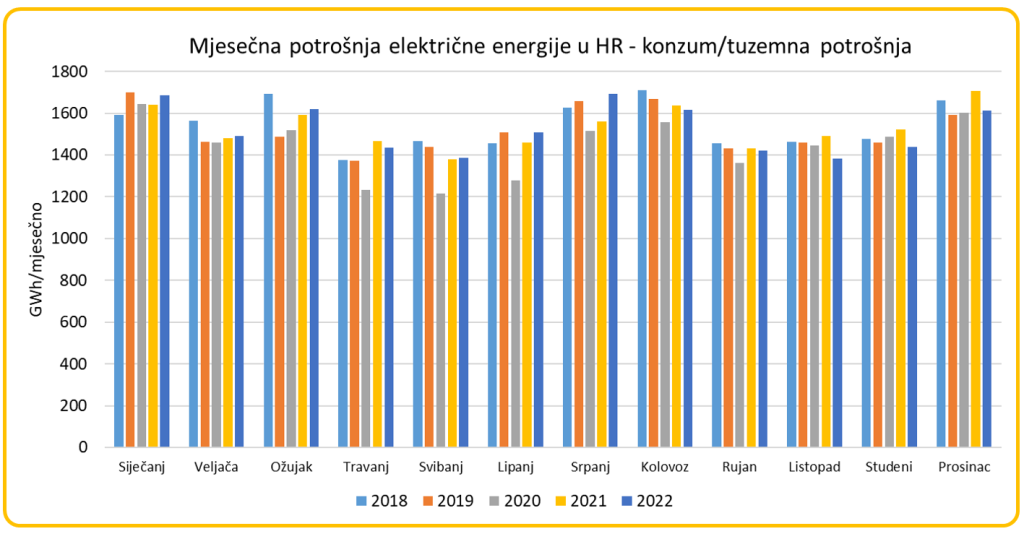
A volatile consumption of electric power is visible, primarily in autumn and winter during the heating season, from October to April, and in the summer months in the season of AC usage, from June to September. That changeability is connected with the sensitivity of consumption (thermal sensitivity) and depends on temperature and climate conditions in these months as well as the growth of economic activities in the country. In 2019 a substantial fall in monthly consumption was recorded as a consequence of the Covid 19 pandemic.
The consumption of electric power in 2022 amounted to 18.463 GWh and was lower by 60 GWh as compared to 2021. It is visible that in July the consumption of electric power, due to a large number of ACs during the tourist season was equal as it was in the two months of the most intensive heating in December and January.
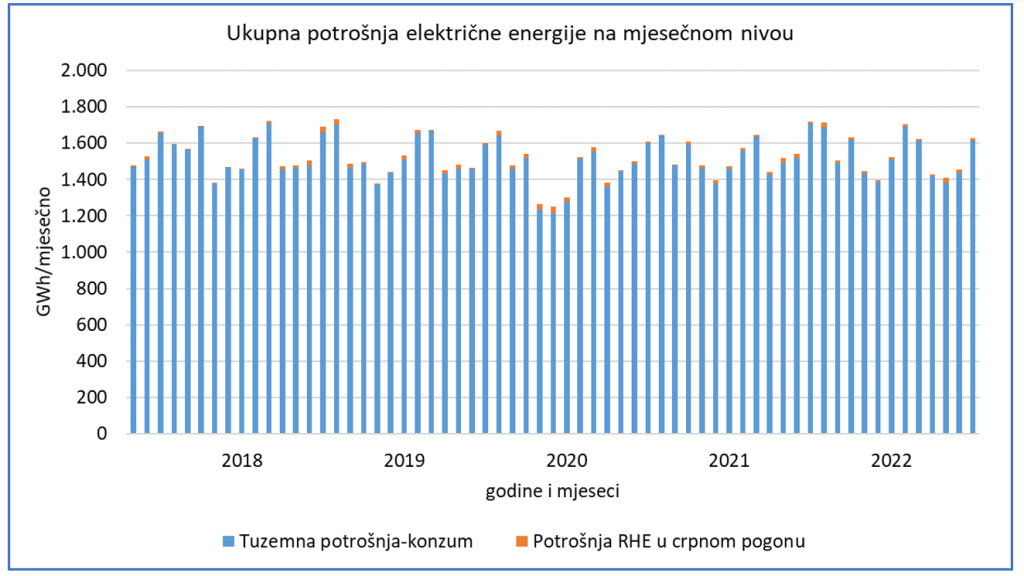
In the reviewed period, a fall of 38,7 GWH in the consumption of electric power was recorded which is primarily the result of the Covid 19 pandemic, war in Ukraine, emigration, price growth, etc.
Electric power trade within the electric power system from 2018 to 2022

In the period from 2018 to 2022, significant variations in the production of hydroelectric power plants were recorded which consequently resulted in the import of electric power and increased production of fossil fuel thermal electric power plants within the electric power system.
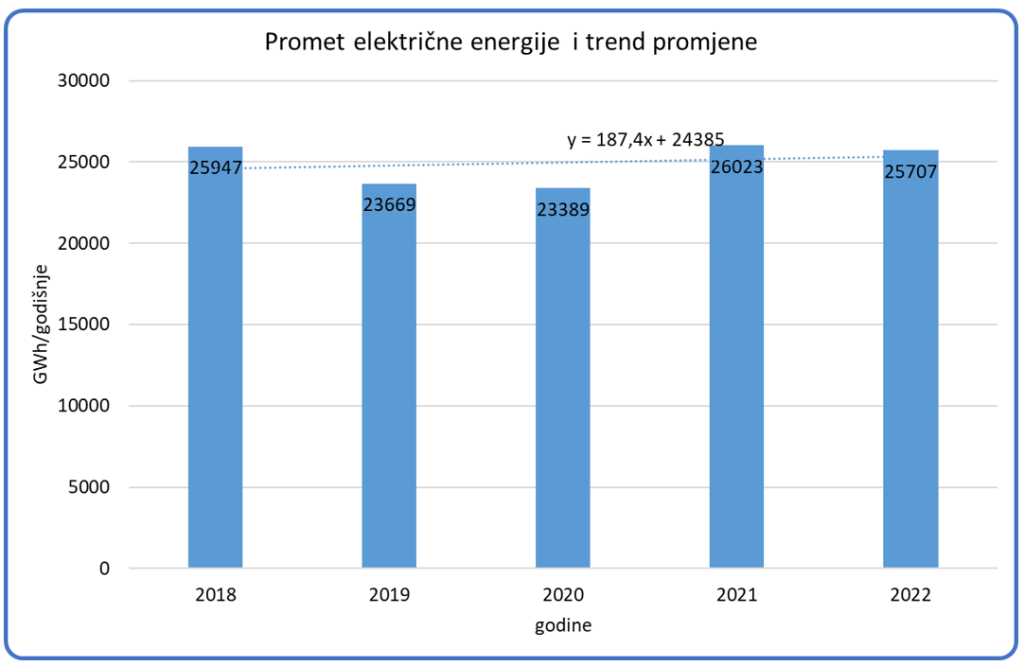
The trade-in electric power within the system increases annually by 187 GWh, primarily due to the transit to other regulatory and market regions. At the same time, however, it also increases losses in the transmission and distribution grid.
The transmission of electric power through the HOPS transmission grid to other regulatory and market regions is constantly increasing by 161 GWh annually which also increases losses in the transmission grid. In addition, the transit share in the trade of electric power also increases.
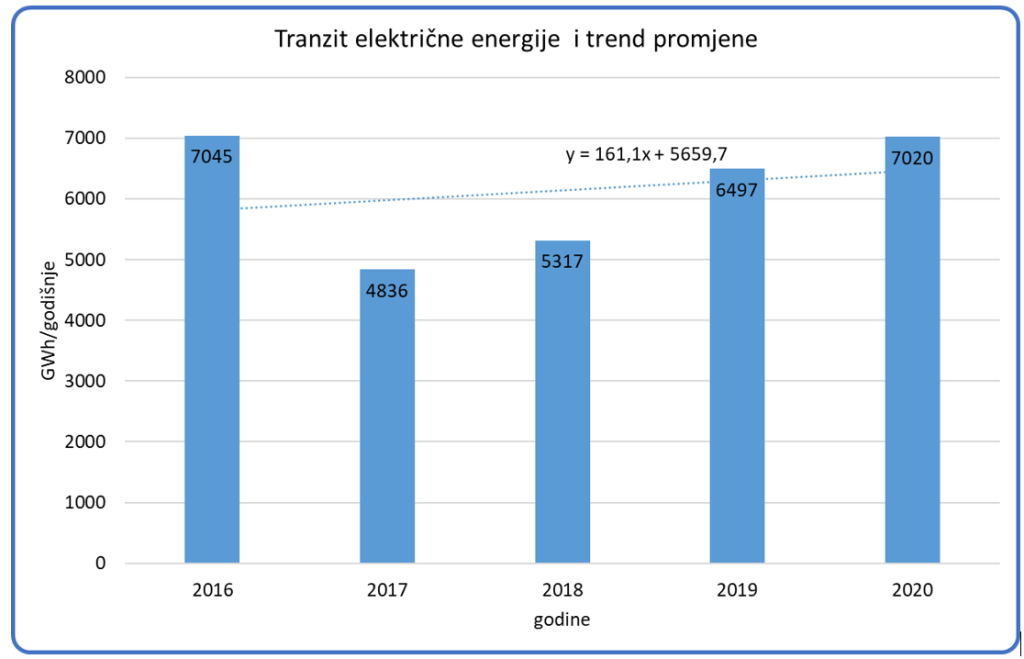
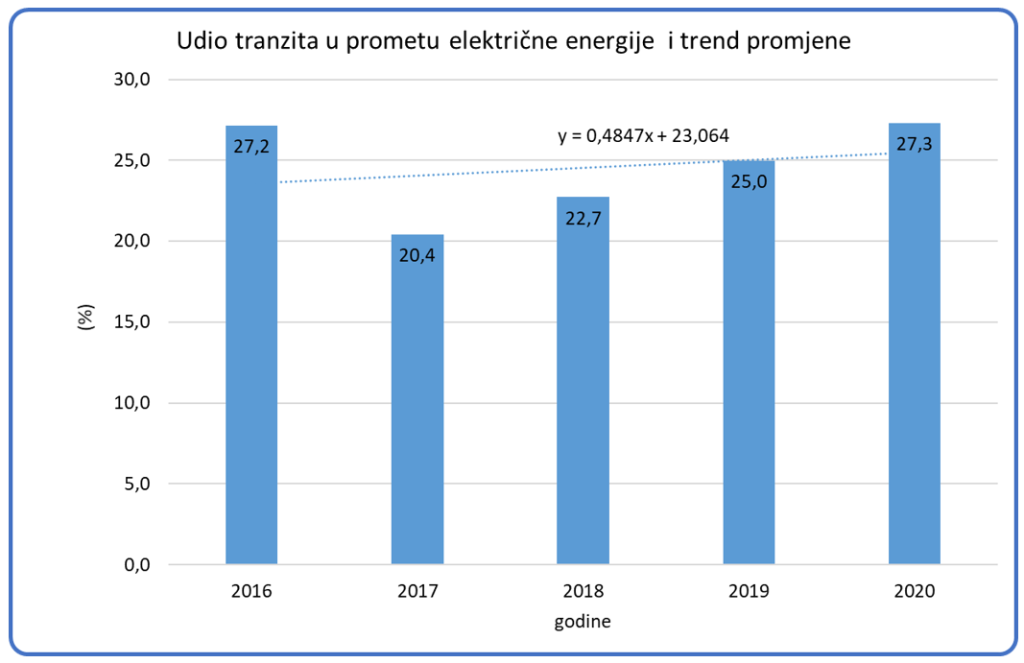

Although the growth of renewable energy sources production is visible in the period from 2018 to 2022, due to climate change and variability of hydrology, the production of hydroelectric power plants is exceptionally variable which results in the increased production of energy from thermal power plants and import of power.
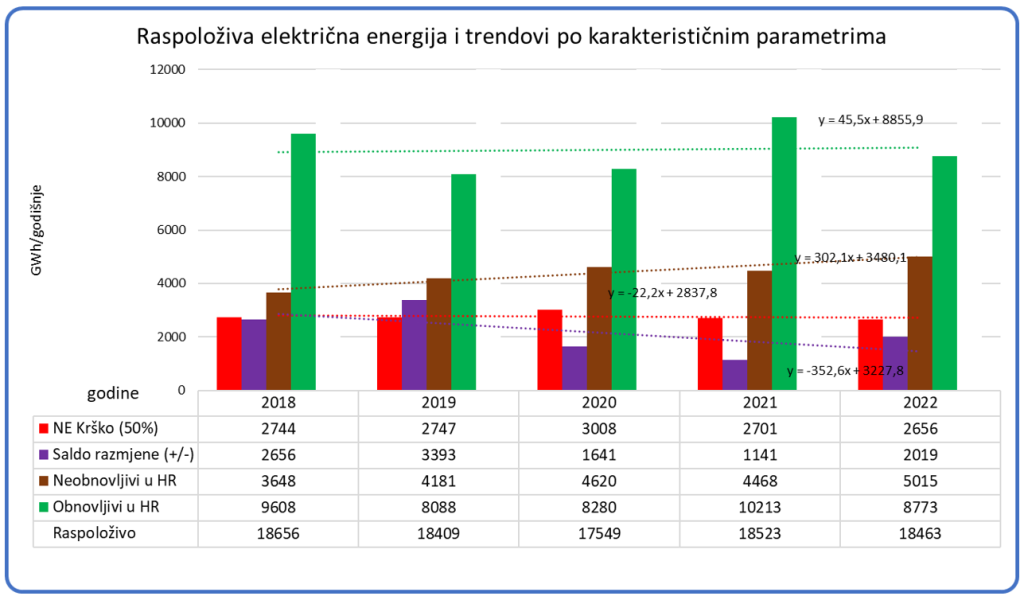
In the last five years, significant changes in trends have been achieved according to parameters of the electric power energy balance, namely, available energy for meeting consumption. The Krško nuclear power plant records a fall in the production of 22 GWh annually which is connected with cycles of fuel substitution. The exchange of electric power with other markets (import) has an annual decreasing trend of 352 GWh due to increased production in Croatia.
Thermal plants and other power plants on fossil fuels and the production of RHE from water usage (unrenewable sources) recorded a growth of production of 302 GWh annually which resulted in the decreased import of electric power.
The production of electric power from renewable sources recorded a modest growth trend of 45 GWh annually, primarily due to the variable production of hydroelectric plants and despite the upward trend of production of other RES technologies.
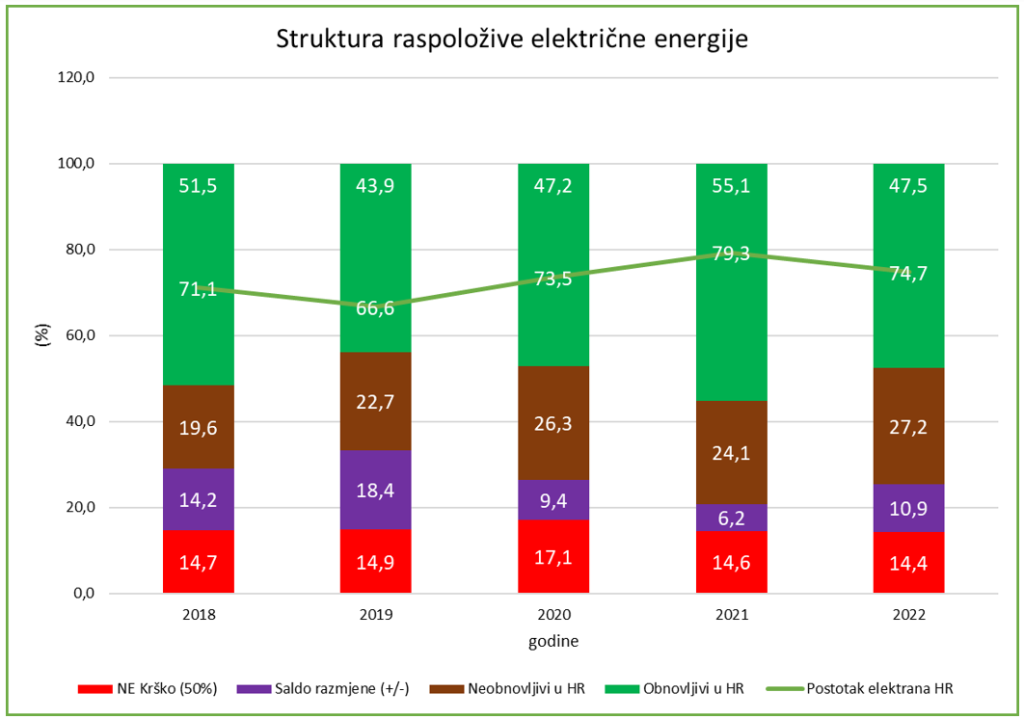
In the structure of available electric power in the period from 2018 to 2022, domestic production has slowly been growing. In the structure of the production of electric power, the growth of domestic production is visible, which in 2022 amounted to 74,7%. The share of renewable sources in the domestic production of electric power amounted to 47,5%
A considerable share of electric power was produced from fossil sources, more precisely 27,2%, which together with imports should be substituted by production from domestic renewable sources which have been developing very slowly in the last five years (growth trend of 45.5 GWh on an annual basis).
Also visible is a significant decrease in the import of electric power of 10.9% in 2022 as well as a stable share of energy produced in the nuclear power plant Krško of 15%.
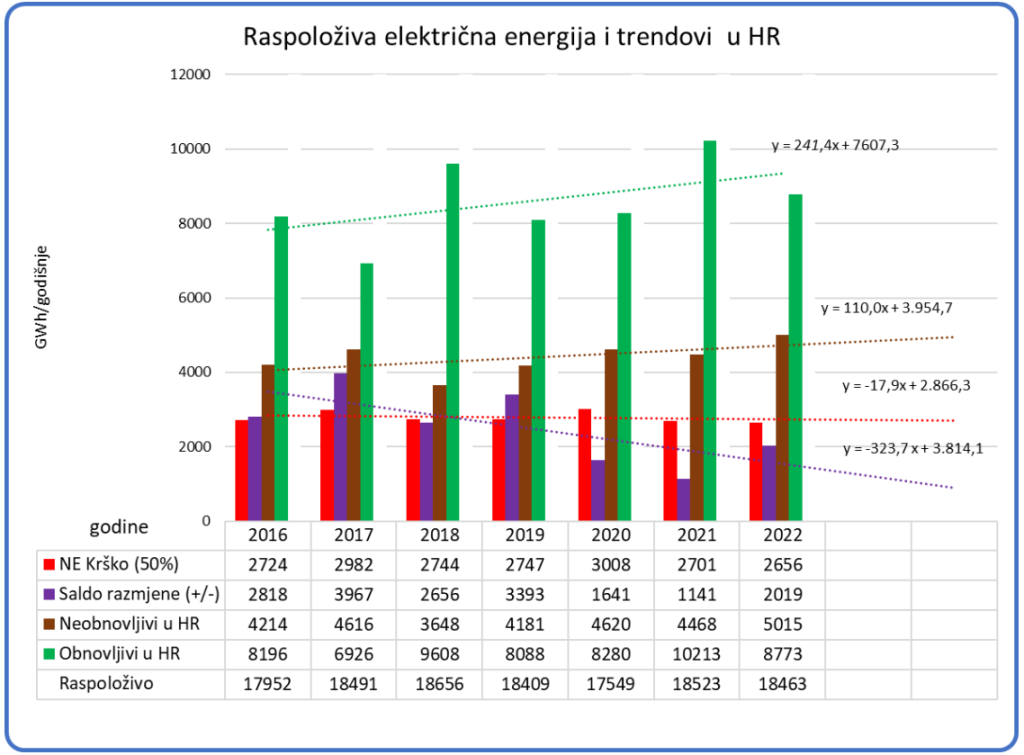
How we developed renewable energy sources from 2018 to 2022
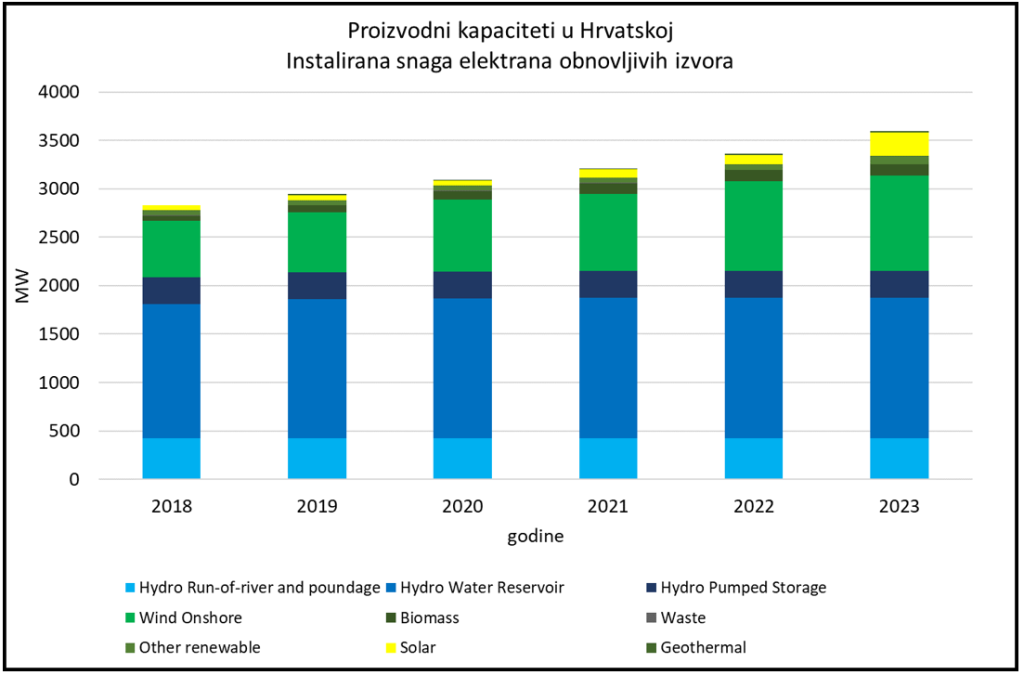
In the reviewed period the growth of installed power of RES can be observed, particularly in wind farms and biomass and biogas plants as well as a minor growth in the installations of solar plants, which is the result of inadequate legislative regulations.
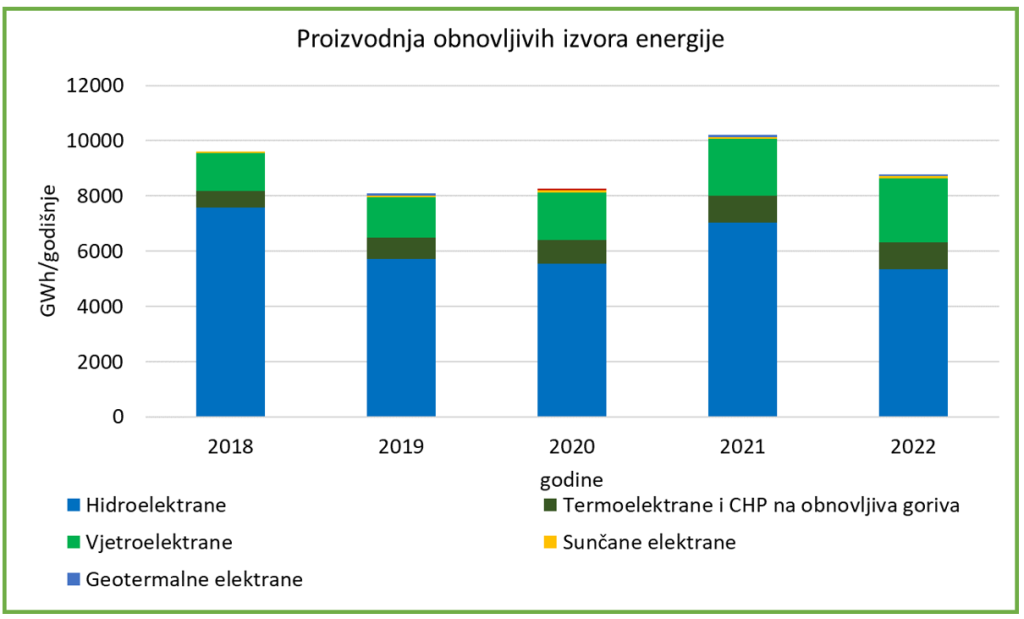
Owing to the development of wind farms and biomass and biogas in the last five years considerable growth has been recorded in the production of electric power from renewable sources power plants. However, due to great variations in the production of hydroelectric plants and due to the lack of a greater share of solar energy, year in and year out we are compelled to import power in the dry summer months.
In the course of the last five year the average import was 2.170 GWh, which corresponds to the production of about 924 MW from wind farms or 1.808 MW from solar plants.
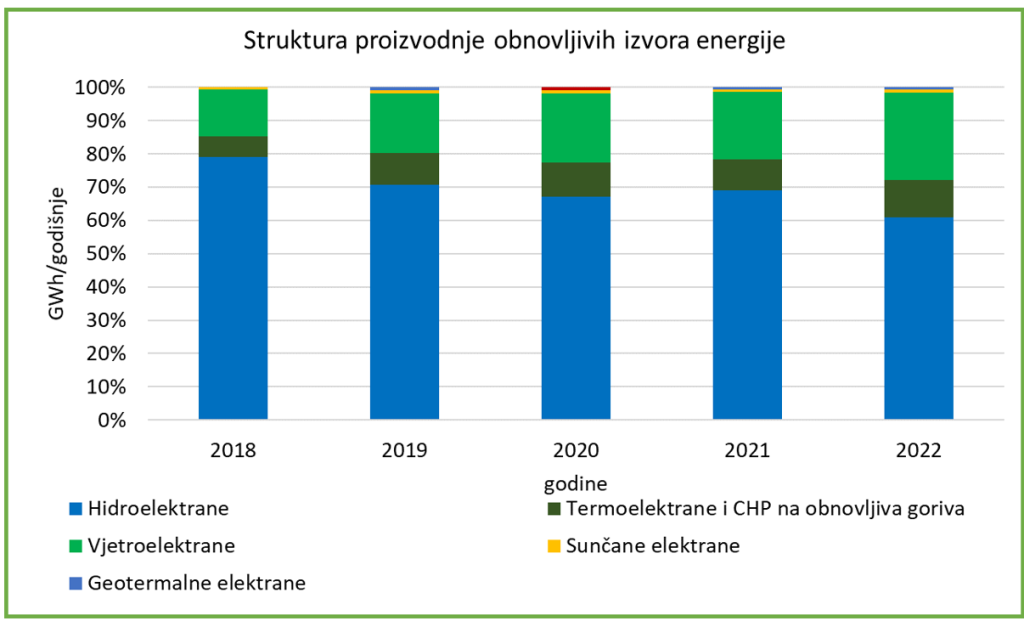
In the structure of the production from renewable sources, the growth of wind farms and biomass and biogas production is depictable.
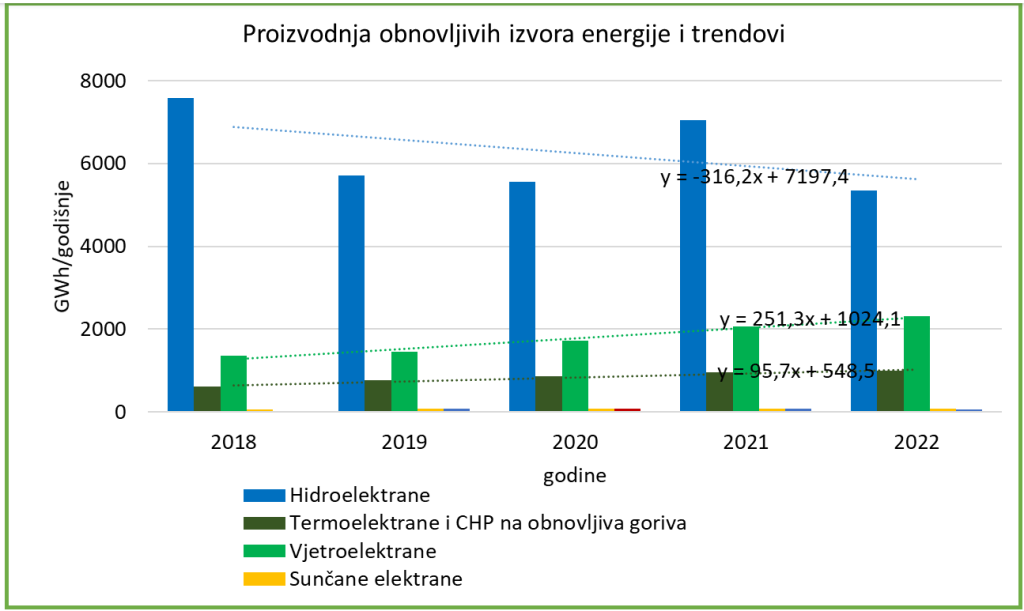
In the reviewed period a substantial decrease of 316 GWh annually was recorded in the production of hydroelectric power plants. But on the other hand, a considerable growth of wind farm production of 251 GWh annually was achieved which corresponds to the annual construction of capacities of 52 MW. In addition, the production of thermal electric power plants on biomass and biogas also increased by 96 GWh on an annual basis. The growth of solar plants in the period under review is negligible.
Hydroelectric power plants production
The production of hydroelectric power plants is the main component in the production of electric power in Croatia. Part of this production cannot be stored and the remaining production of hydroelectric power plants is the result of the management and optimization of water reserves in accumulations and compensation pools. This enables the use of this product in the optimal time for securing the balance of the electric power energy system. This means that the maximum production of accumulation hydroelectric power plants is at the peak of consumption when the price of electric power is the highest, attaining thereby the highest value of water.
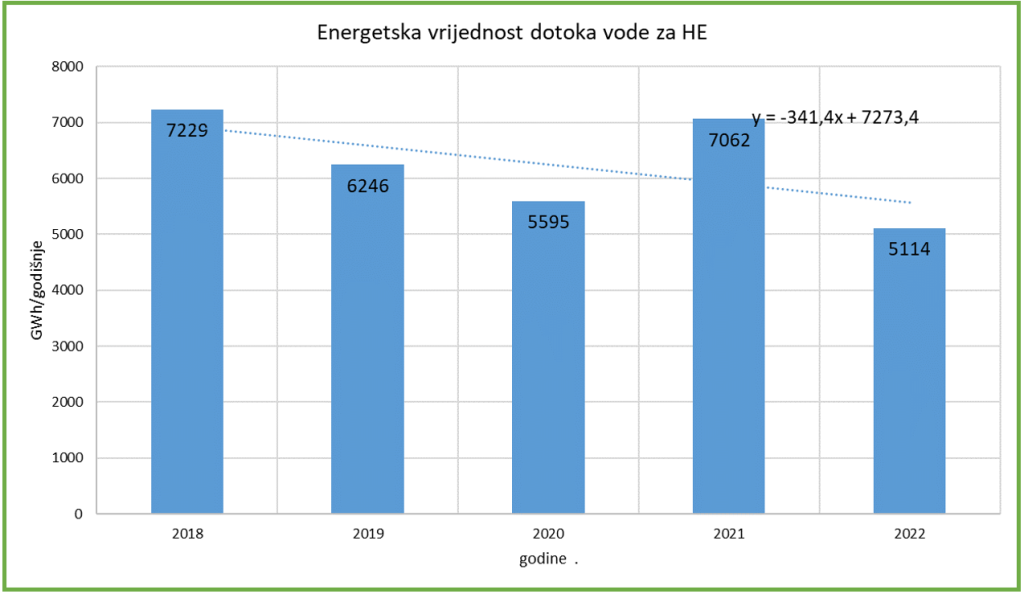
The year 2022 was characterized by exceptional draughts and below-average water flows which resulted in a substantial fall in the production of hydro-energy. The energy value of the water flow was smaller by 1298 GWh concerning the annual average while the level of water reserves in the accumulations was below historical values in the first nine months of the year. Owing to the careful management of HEP production and trade operators, the water reserves in the accumulations returned to their regular values by the end of the year and were even somewhat higher than average.
The filling up of accumulations was the result of favorable hydrology in November and December and unusually mild temperatures during the heating season which relaxed the balance between the supply and demand of electric power. The appropriate level of filling up water reserves in the accumulations represents a factor of security for the adequate and economical functioning of the electric energy system of Croatia, It also enables a calmer approach to the functioning of the system in 2023 with changing prices of electric power and fossil fuels.
What can we expect in 2023?
On the first day of 2023, Croatia had a total of 4.621 MW of installed capacities for the production of electric power. We should add to that the available power of 348 MW of the Croatian share from the Krško nuclear power plant.
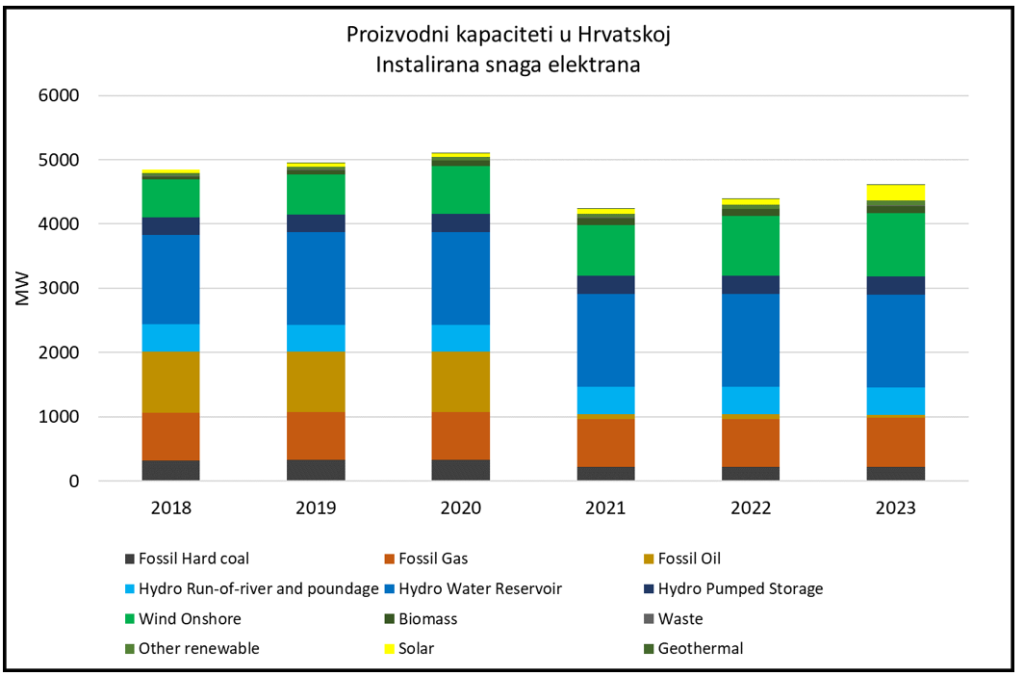
Will this be the year in which Croatia records a boost in the development of renewable energy and finally increases solar capacities and decreases imports in the summer months?

An analysis of the expected production of electric power from the existing renewable energy production capacities because of the average hydrology, windiness, and cloudiness in 2023 on a monthly level shows that there is an insufficiency of solar plant installed power which could increase domestic summer production so it seems that substantial import of electric power will be required this year as well.
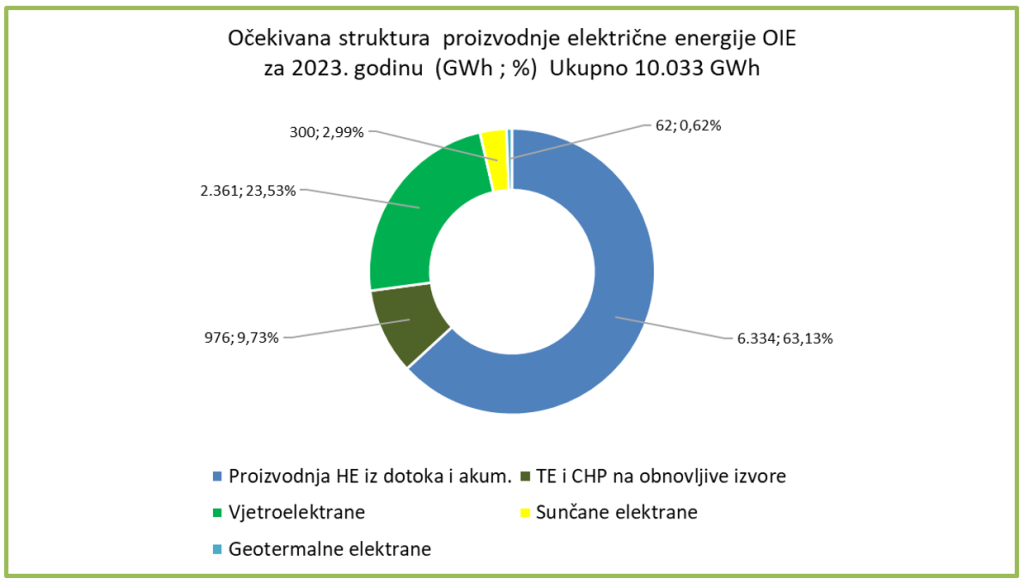
It is anticipated that in 2023, 10.033 GWh of electric power from renewable sources will be produced, meaning that with the expected consumption of 18.600 GWh in Croatia, RES will account for 54% of the consumption.


